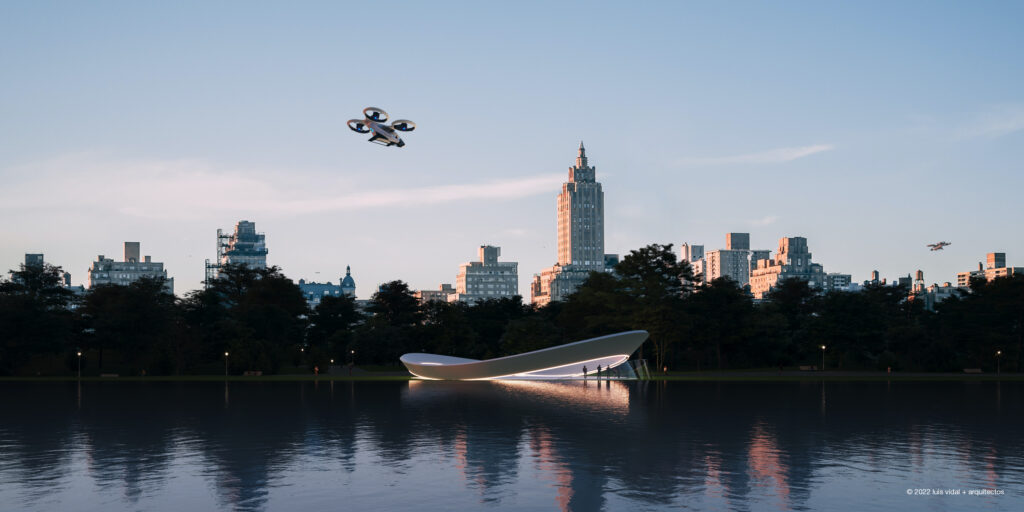
Platinum Sponsors:




Platinum Sponsors:



Jose I. Rodriguez, Business Development Manager, Bluenest – Powered by Globalvia), discusses the innovative infrastructure necessary for air taxis and unmanned aviation.
] In less than a hundred years, aviation went from humble beginnings to jet-engined aircraft carrying hundreds of passengers around the world. The coming decades could see an equally dramatic transformation as the industry embraces automation, artificial intelligence, and new infrastructure and airframe designs.

“Aviation will transition from piloted aircraft to being remotely piloted and finally full automation,” says Jose Rodriguez, Business Development Manager, Bluenest. “AI will make decisions or at least instantly propose decisions and electric batteries, or hydrogen fuel cells will provide power.”
Bluenest is exploring the future of air mobility and plans to build vertiports – airports for air taxis, drones and other eVTOL (vertical take-off and landing) vehicles – around the world.
It anticipates ground transport gradually shifting to the sky beginning with local cargo being carried from out-of-town locations into city suburbs. In the late 2020s, air taxis could take to the skies in rural and costal locations – away from traffic and large populations – and in the next decade passengers will routinely be taking automated air taxis from an airport to their downtown hotel.
Vertiports will make this future possible. Rodriguez explains this essential infrastructure will come in various sizes but have a relatively small footprint, simple designs and integrate other transport modes as much as possible. In fact, there are already more than 30 vertiport designs to cater for different users and environments.
“A vertiport will not be so different from a heliport and many of the relevant ICAO regulations will apply,” he says. “But there will be different levels, including waiting areas and perhaps different transport options at an underground level.”
Vertiports could also house air ambulances and other emergency services. The plan is to make them as sustainable as possible and solar panels or hydrogen power are being explored as part of the designs.
Air navigation
A key aspect of this industry transformation will be the integration of air taxis and drones into civil aviation airspace. Initially, the low-level flights will mean little interaction with commercial aircraft, but this will progress into dedicated control centres where controllers interact with the local air navigation service provider. Once suitable trials and certifications are complete, Rodriguez expects AI to dynamically allocate slots for perfect coordination with the local airport.
“But commercial aviation will always have precedence,” he says. “You’re talking about a handful of passengers versus hundreds of passengers.”
More of a concern, according to Rodriguez, will be securing the long-term investment and resources necessary to turn aspirations into reality. Margins will be tight and though vertiports will charge a modest take-off and landing fee, the business model has yet to be defined and finalised. Bluenest – owned by Globalvia – is collaborating with manufacturers to ensure vertiports and air vehicles are aligned, minimising research and development costs.
What is certain, believes Rodriguez, is that innovative air mobility will become vital to businesses and national GDP as well as the quality of life for communities.
“We are agnostic,” Rodriguez concludes. “Much like an airport, we will cater to air vehicles from multiple manufacturers and for multiple uses and we will take advantage of all the expertise they have to offer. Our infrastructure is the key to tackling important challenges in congested cities and remote areas by connecting people and goods.
“A lot of research, standardisation, regulation, experimentation and development is still ahead, but we are confident that vertiports will become as important as airports, train stations and logistical hubs,” he adds. “We will collaborate as much as necessary to ensure a sustainable and exciting future. There is no limit to ideas and innovation and unmanned aviation will become a reality.”